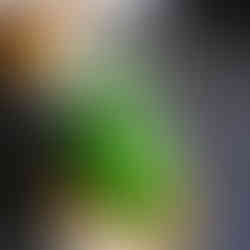Tri-cornered Leeks
- Zoë Hughes

- Feb 20, 2023
- 2 min read
Onion Weed, Three Cornered Leeks, Wild Leeks - Allium triquetrum

These delicious wee gems are one of my favourite wild greens. They are the very first gourmet green to spring out in winter. They come out as early as December and continue to produce tasty leaves until April.
Another reason I love them so much is that they provide a rare wild food opportunity for gluttony. They’re invasive so eating them is beneficial for the environment. In some parts of the UK they form gigantic troublesome mats that require professional removal, so it makes sense to use them for food. Eating invasive species is a way of reciprocating a relationship with the wild, something I talk about on foraging walks alot.
They came to the British Isles with the Romans so they’ve been with us a while and they’re very common in the South of England. They’re not so common in Scotland but Arran certainly does have some. There are some abundant patches around Kinneil Park and Blairbeg Lane in Lamlash. Tri-cornered leeks are expected to spread into more of Scotland as climate change progresses, but we still need to exercise caution when gathering and disposing of parts of the plant as this can cause it to spread and damage more ecosystems.

The invasiveness of tri-cornered leeks makes them the perfect candidate for recipes that require very large quantities of ingredients, such as ferments or spices. I have recently recruited my partner into a new household tradition of gathering a full carrier bag of tri-cornered leeks each time one of us passes the main patch in Lamlash. I’m a big fan of sauerkraut and tri-cornered leeks make exceptional ferments. I’m hoping to make enough to last until next spring!
Let's get to what you all came here for, how to identify tri-cornered leeks:
Key Features
Strong onion smell
The flower stems are triangular in the cross section
Long, narrow, lanceolate green leaf blades
Small white drooping flowers
Grows on the ground forming dense mats
They’re in season from December to April
Lookalikes to be Aware of
They can be confused with the early leaves of bluebells, snowdrops and daffodils, which are toxic. Before the flowers of plants arrive it can be tricky to tell them apart, however the onion smell is the best indicator of safety here. Arran is also dense with wood-rushes, which can look similar from a distance. They’re grassy and hairy low growing plants. Wood-rushes do not smell of onion.
There is a similar wild leek, called few-flowered leeks. These do look very similar, but the flowers are slightly different. The flowers of few-flowered leeks contain bulbils (or pups) of new growth from the flower stems. The good news is that tri-cornered leeks and few-flowered leeks are both edible. As long as you smell onion coming from crushed leaves, you are safe. Wild garlic is often confused with tri-cornered leeks too. Wild garlic has broader leaves than the wild leeks.
The biggest risk of gathering lots of early spring green leaves, like tri-cornered leeks or wild garlic, is accidently gathering toxic leaves along with them. When I harvest handfuls or bundles in one go it's very easy to get ivy, lords and ladies or - even worse - hemlock water dropwort leaves muddled through the bundle. As a rule, I do not gather bundles in places where hemlock water dropwort grows, I tend to gather one by one to make sure nothing deadly has snuck in. When I gather tri-cornered leek or garlic, I pick through my bundle for any dead leaves, ivy leaves, sticks, slugs or otherwise before I leave the spot, then I do this again when I’m at home washing the leaves.
My best advice here is to learn how to identify more toxic plants. This will help increase your confidence and your safety. We cover a wide variety of toxic plants in my events, you can sign up here.
Taste and Edibility
They can be tough and stringy, but chopping them finely solves this problem. They can be used like spinach and they give a light onion flavour. They make excellent ferments.


















Comments